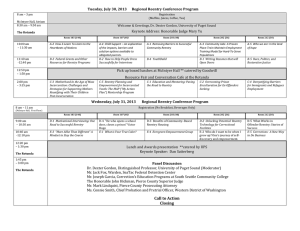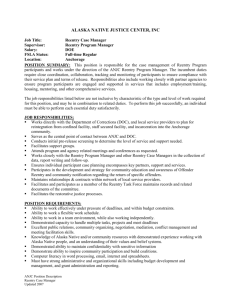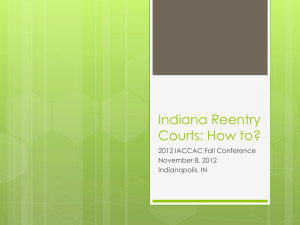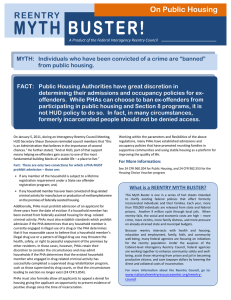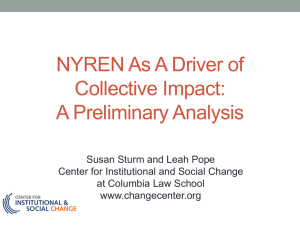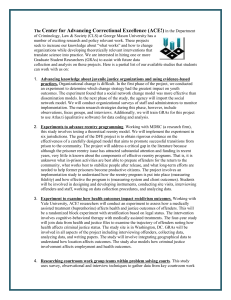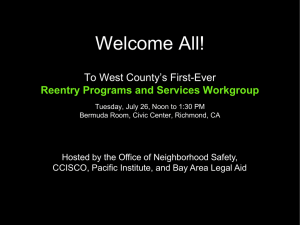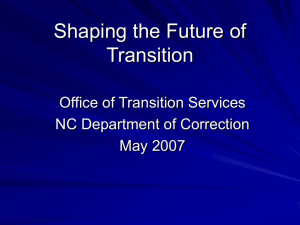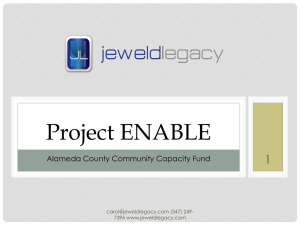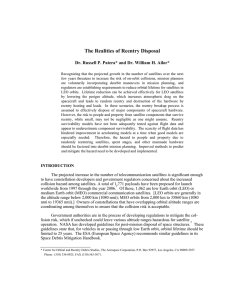Focusing on Significant Issues for Reentry and Family
advertisement
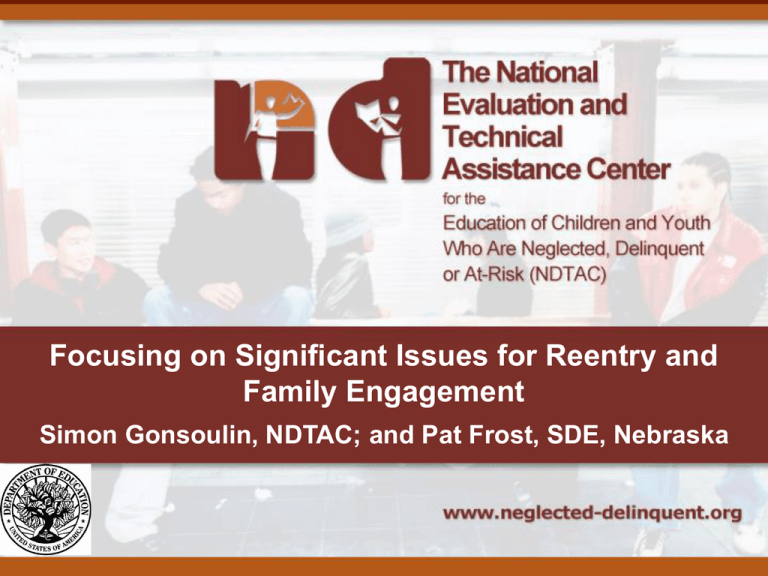
Focusing on Significant Issues for Reentry and Family Engagement Simon Gonsoulin, NDTAC; and Pat Frost, SDE, Nebraska Objectives of Session The group will explore common barriers or roadblocks experienced by youth attempting to reenter successfully school and the community at large after incarceration. The participants will brainstorm ideas that N or D coordinators can put in place to strategically address these barriers with a focus on family engagement as a component of the reentry planning process. The group will engage in preliminary discussion focused on connecting the monitoring event to immediate and future technical assistance pertaining to reentry and family engagement. 2 What Is Juvenile Justice Reentry? Reentry refers to the process and experience of reentering society after a term of incarceration (Youth Reentry Task Force, 2009). “A coordinated set of activities for the youth, designed within an outcome-oriented process, which promotes successful movement from the community to a correctional program setting, and from a correctional program setting to postincarceration activities.” This definition identifies three elements of successful transition: 1. It is coordinated. 2. It is an outcome-oriented process. 3. It promotes successful movement between the facility and the community (Griller-Clark, NDTAC Transition Toolkit, 2008). 3 Why Is Reentry Planning Important? National crime rates are higher and public safety is compromised because many youth exiting detention are not afforded necessary supportive services when reentering their communities. One study found that, within 12 months of their reentry to the community, only 30% of youth were involved in either school or work (Burllis, 2002). In a recent study of homeless youth, between 10 and 17 years of age, the Wilder Research Center found that 46% had been in a correctional facility; of those, 44% exited into an unstable housing situation ( Owen, 2007). 4 Why Is Reentry Planning Important? (continued) Many within the justice system, the human services system, and the community have come to recognize that returning young people to their communities with only marginal investments in their rehabilitation and little support for their positive integration into community life is a recipe for failure (Center for Law and Social Policy, 2006). Of youth released from foster care, group homes, or juvenile detention centers, 25% spent their first night either in a shelter or on the street (Clark, 1996). Youth who have been transferred to the adult system face additional reentry problems. Juveniles incarcerated in adult facilities are 30% more likely to be rearrested than those retained in the JJ system, both sooner and for more serious offenses (Bishop, 1996). 5 Why Have Reentry Planning, Funding, and Practices? Youth require planned supports to reintegrate into their families, schools, and communities. Youth require a Positive Youth Development Model of care. Effective reentry services reduce recidivism. Fostering improved family relationships and functioning, reintegration into school, and mastery of independent life skills, can help youth build resiliency and positive development to divert them from future delinquent and other problematic behaviors. 6 Goal of Effective Reentry Typical goals for community-based reentry services include: social integration into family and community systems of care, reduction in recidivism, housing stability, advancement in school, employment, and mastery of life skills. 7 Principles and Promising Practices in Reentry Services Prerelease planning Reentry services in the community where returning youth live Reentry services that proactively address developmental deficits Focus on permanent family/guardianship connections Recognition of diverse needs of returning youth Structured workforce preparation, employment, and school attendance Better use of leisure time 8 Focus on Education and Employment Attendance at school is a strong protective factor against delinquency. Youth who attend school also are much less likely to commit crimes in the short term and long term also. More than one-half of the youth in detention have not completed grade 8, and two-thirds of those leaving formal custody do not return to school. Employment is another very strong predictor of criminal behavior. Individuals who have a job are less likely to commit crime (Uggen, 2003). Research consistently finds that recidivism often occurs just after release, sometimes within a few days. 9 Why Youth Don’t “Make It” With Our Current Efforts Youth are considered difficult to manage. Schools face too much pressure to excel through performance on standardized test scores. Schoolwork completed in detention/secure care is not counted by schools toward credit completion. Zero tolerance policies affect reentry youth. State and local legislation place reentry youth in alternative placements as a matter of standard practice. 10 Recommendations: “Think Exit at Entry” Records exchange is needed—minimum number of days, standardized records, back-up/tickler system. Direct planning is done with facility, youth, family, and school (youth’s plan for personal future). Monitor each student’s progress in school community at 5, 10, 15, and 30 days—don’t wait for 60 and 90 days out. Academic programs in facilities must reflect the public school curriculum, and a vocational program must extend beyond the work of the institution. Vocational classes should develop portfolios. 11 Recommendations: “Think Exit at Entry” (continued) For academic classes, provide report cards and list academic achievements. Address mental health and substance abuse needs, if appropriate. Stay in touch with the probation officer about school-related successes and problems. Share information about skills learned and specialized treatment. Provide prerelease visits to community and school (passes and furloughs). Identify and provide aftercare/reentry services and support to help address family needs that will assist the youth in being successful in school and/or employment. 12 Family Engagement, Nebraska Style A guide to using “Beyond the Bake Sale” in school— PowerPoint slides for future technical assistance Transitions for Life—A parent training institute Parent to Parent Network—Parents empowering parents, an advocacy initiative 13
